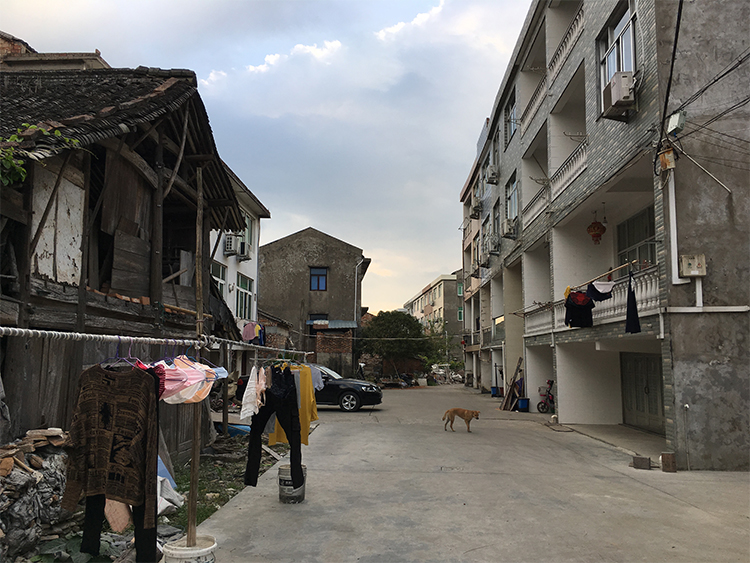
Tolerated informality: Weak land governance and dualism at the Chinese urban-rural interface
– Ava Lynam
The increasing scale and pace of urban expansion over recent decades has resulted in uneven socio-spatial development across the globe, polarising inequalities between the city and countryside1. As land becomes an increasingly scarce resource in the midst of this planetary urbanisation, its governance is more critical than ever2. This is particularly the case at urban-rural interfaces, where the impact of trans-local networks of industrialisation is most exaggerated and areas of ‘wilderness’ face severe degradation3.
This dramatic urbanisation has been epitomised by China since its 1978 transition to a market economy, which has fuelled rural to urban migration, economic growth, and growing socio-economic inequalities4. Informal land markets have emerged in disinvested rural areas being engulfed by urban expansion, bringing concerns around land governance to the fore5. This paper takes the case of Huangyan-Taizhou to exemplify how, in the context of a historic dual land system, a complex interplay of actors has emerged at China’s urban-rural interfaces who exploit conditions of weak land governance in various ways. With the consequences on rural poverty, social stability, environmental degradation, and food security underpinning current political, policy, and academic debates6, the longer-term impacts of these processes can no longer be overlooked.
Defining land governance
Governance can be defined as the way in which power is exercised through decision-making processes “by a government, market or network, whether over a family, tribe or informal organisation or territory and whether through laws, norms, power or language”7. It also describes the institutions and instruments which enable processes of mediation between various groups, defines their legal rights, and establishes platforms for communicating their interests8. More precisely, the governance of land “concerns the rules, processes and structures through which decisions are made about access to land and its use, the manner in which the decisions are implemented and enforced and the way that competing interests in land are managed”9. Land governance requires an understanding of tenure types, land markets, institutions, and the interrelated stakeholders embedded in the process, whose aims might include survival and sustenance, increases in personal wealth, or overall societal wellbeing. It is highly sensitive and deeply embedded in power and politics, encompassing formal and informal actors, customs and procedures, as well various forms of legitimacy: statutory (institutions that employ legal policy frameworks); customary or religious (traditional and informal practises based on ‘social legitimacy’) or none (illegal land appropriation by the state or private developers)10.
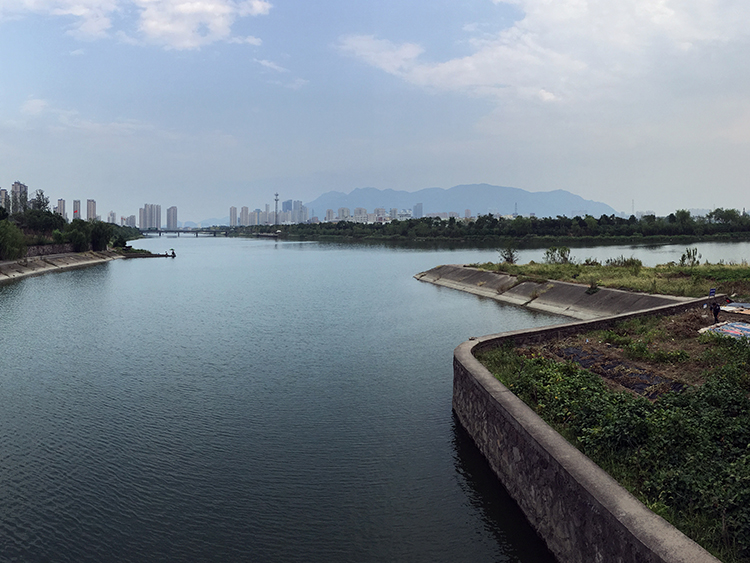
Image 2. Landscapes shaped by extended urbanisation in Huangyan-Taizhou, Zhejiang province 2019. Source: Author.
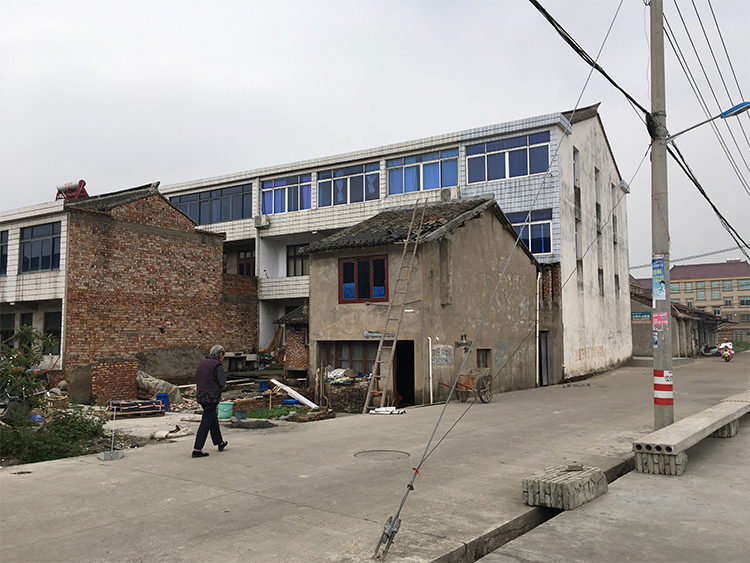
Image 3. Informal housing additions rented to migrant workers in Huangyan-Taizhou, Zhejiang province 2019. Source: Author.
The emergence of China’s informal land markets
China’s affluence has been rising steadily in recent years, yet this has occurred at the expense of conditions in the countryside, which remains dependent on cities for investment, employment, and technology11. A multidimensional restructuring has produced urban-rural interfaces which are characterised by uncoordinated amalgamations of new and old developments, changing economic bases, and rapidly developed infrastructure12. A distorted urban-rural relationship has resulted in rural decline and excessive land development, in a context in which villages at peripheral areas become engulfed by urbanisation as urban spatial control is extended into rural areas by municipalities13. Much of this transformation can be linked to weak land governance, which can result in wider negative societal impacts including displacement, land conflicts, wealth and gender inequality, and environmental degradation14.
Prior to its 1978 economic reform, China experienced tightly controlled state-driven land governance. In the ’50s, the Chinese Communist Party converted urban land into state ownership, and pooled farmland into large communes that were later divided into smaller village collectives15. Following the economic reform, the Land Administration Law introduced rules and processes regarding land use and ownership rights, forming an urban land market which restricted the transfer of rural land to non-agricultural use16. While land laws and policies have become increasingly market-oriented since the early 2000s, the lease and transfer of rural land must occur through state acquisition, in which it subsequently sells use rights to developers17. Furthermore, solely agricultural or rural housing land uses are permitted on rural land. As a result, China has inherited a restrictive and dualistic land system consisting of state urban land and collective rural land18.
Informal land markets at Chinese urban-rural interfaces have emerged as a result of typical characteristics of weak land governance that have been generated by complex land tenure conditions, inequitable land acquisition processes, and a lack of transparency and opportunities for participation in decision-making processes19. This is further compounded by poorly regulated institutional frameworks, a lack of municipal financial capacity, administrative corruption, and ambiguities in rights and responsibilities20.
Complex dual land market and tenure conditions
As outlined above, China’s dualistic land system is highly complex: in urban settings, state land is sold for long-term use rights, while rural land is owned and managed by village collectives21. High demand of scarce urban land inflates urban land values, while there is no legal market for rural land. Thus, it is purchased by the state from village collectives at very low prices22. This creates a unique situation at the urban-rural interface that has proven to be extremely profitable for developers, with both tenure types sitting side-by-side with vast disparities in value23.
Unsustainable exploitation of land acquisition
Following public revenue reforms in 1994, local governments sought alternative revenue primarily through selling urban land rights to developers24. Municipalities thus exploited the dual land market to monopolise land supply, expand urban boundaries, and capture large profits by selling off cheap rural land. Between 2005 and 2011, 50-70% of municipal revenue was derived from sales of newly converted urban land25. Attracting investment has brought environmental burdens to rural areas, and with a vague definition of ‘public interest’ in policy, there are few restrictions to municipalities exploiting the dual land system, leaving farmers landless and exacerbating rural poverty26.
Lack of transparency and participation in decision-making
Compensation rates are based on rural land value, which is considerably lower than its market value once converted to urban use27. While conflicts frequently occur when farmers are unwilling to forfeit their land and livelihood, the current land acquisition process does not allow for participation in decision-making processes or have mechanisms for conflict resolution28. While rural landowners largely remain uninformed about their rights, protests and legal confrontations are not uncommon in attempts to push for more substantial compensation29.
The informal land market that emerges from these conditions plays a crucial role in providing a low-cost housing market and accessible local economy for millions of migrants, low paid workers, and landless farmers30. In an endeavour to create more rentable floor area, rural land is illegally subdivided and developed. However, the inefficient land use generated by the illegal transfer of state land, the encroachment on agricultural land, as well as the insecure tenure and distorted land values, also hinders sustainable rural development and leads to further exclusion of vulnerable groups31. The lack of municipal revenue collected from these developments also impedes the delivery of infrastructure and services, and fuels the cycle of land acquisition.
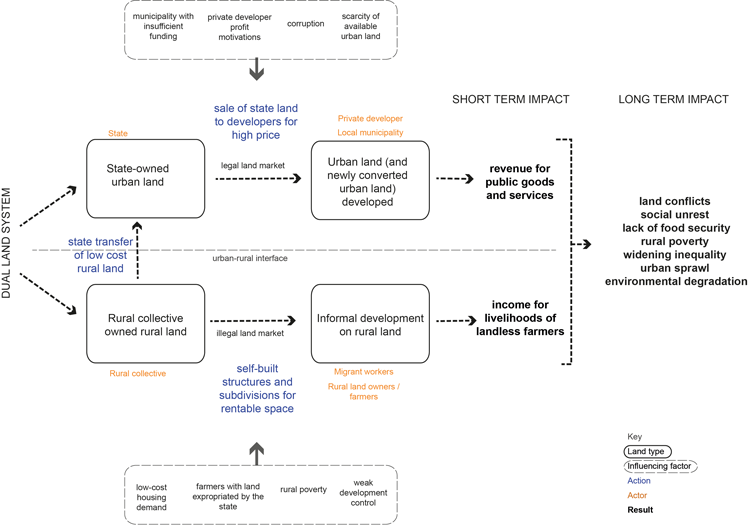
Image 4. Diagram showing how Chinese informal land markets are generated within the dual land system, showing the interactions between different actors, their influencing factors, and the long- and short-term impacts32.
In China, weak land governance is also caused by power struggles in a complex network of actors, with ambiguities in roles and rights33. Informal land markets have generated new interactions between the state, private developers, village collectives, local landowners and farmers, and migrant workers. While village collectives have powerful customary influence within their communities, their role is restricted in state and market-led land governance processes. Likewise, local landowners and migrants hold strong social legitimacy within informal land markets, yet have very low influence overall. While these groups benefit in the short term from the rental of affordable housing, farmers are left without land or livelihood after land acquisition. Illegal land acquisition by municipalities and developers has no legitimacy, yet these actors maintain a high degree influence in the process.
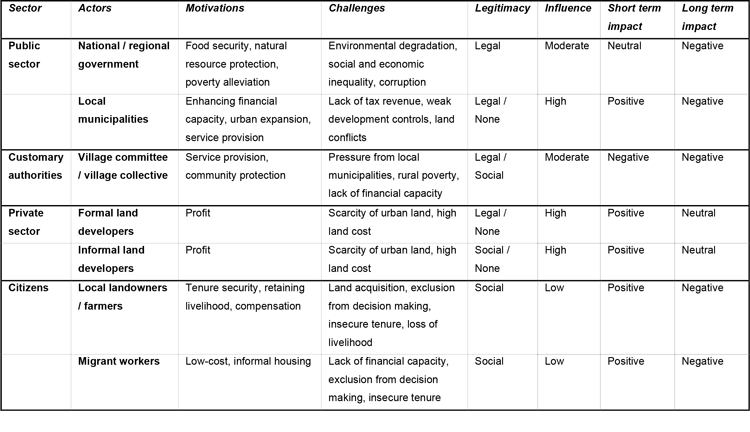
Image 5. Stakeholder analysis in the context of China’s weak land governance34.
The case of Huangyan-Taizhou
In the affluent coastal province of Zhejiang, and in the midst of one of the largest regional conurbations in the world, the Yangtze River Delta, lies the industrialising rural hinterland of the prefecture-level of city of Taizhou. A one month-long empirical study in Taizhou’s Huangyan district revealed conditions at the urban-rural interface that are illustrative of wider land governance challenges faced in China, as well as in other global contexts. As a result of top-down rural urbanisation visions driven by the regional upgrading of the local moulding industry, formerly rural villages at Huangyan-Taizhou’s urban-rural interface are undergoing a profound socio-spatial restructuring. In response, local villagers are adapting their local economies and livelihoods, creating a hybrid and fragmented landscape of agriculture and industrial production.
As in other cases, Huangyan’s transformation processes are driven by an unsustainable top-down development tract shaped by weak land governance, through ongoing farmland acquisition to provide profitable development sites. Entire villages have become heavily reliant on the moulding industry as the renting of land to factories has become a lucrative source of income for village collectives. While many ex-farmers are satisfied with compensation payments and are undergoing drastic increases in wealth and/or living conditions, no alternative employment is offered to counteract their loss of land and livelihood in the long-term. Many villagers consider formal land use regulations to be an unreasonable constraint, and despite not being permitted by the village collective, subdivisions to new rural housing developments and extensions to existing structures are common. This extended space enables an informal land market that provides affordable rental accommodation to the area’s increasing migrant workforce and facilitates the emergence of household moulding enterprises that tap into trans-local networks – both generating a crucial income for landless farmers.
Due to the significant role played by this informal land market in the functioning of villages and the regional economy, it is a reality tolerated by village collectives. In some cases, it is recognised as an opportunity for profit from the top-down, with village collectives formalising illegal land uses and converting them into official village enterprises. In this way, village collectives manoeuvre strict land use regulations and legitimise violations for their own gain. Opportunities for villagers to reap the benefits of this ongoing industrial upgrading and urbanisation process are highly dependent on the varying governance of village collectives. Pre-existing financial resources or personal networks appear to enable the manipulation of land governance processes. However, while some actors have profited highly from this unequal agency, it remains unclear how many landless farmers or unskilled villagers can adapt to these transformations in the long-term.
Toward good land governance?
Several international bodies have outlined guidelines for ‘good governance’ of land that could be applied to this case. The principles set out by the Food and Agriculture Organisation of the United Nations (FAO) and United Nations Human Settlement Programme (UN-HABITAT), include tenure security, equitable access to land and natural resources, transparent and participatory processes, decentralised land administration, equal rule of law, and conflict resolution35. The UN Sustainable Development Goals and FAO’s Voluntary Guidelines on the Governance of Tenure both highlight good land governance as essential for global challenges such as food and water security, natural resource protection, climate change, poverty, conflict, gender equality and wider socio-economic development36. Achieving this, however, requires the political will to address the embedded power structures and a commitment to effective implementation. In China, weak land governance, and the informal land markets that emerge as a result, could be addressed by:
Unifying the complex tenure system and land readjustment
Land governance issues in urban and rural conditions must be considered holistically37. Though the 2013 Land System Reform attempted to reduce duality by allowing ‘rural construction land’ into the market, it simply segmented the rural land market without addressing its informality38. Effective land rights equalisation requires institutional readjustment and the implementation of a unified standard for the management of rural and urban land use39. In this case, land readjustment could help to tackle inefficient land use, conflict, and tenure complexities at urban-rural interfaces by rearranging and subdividing adjacent plots to unify fragmented land ownership and use40. If municipalities commit to a cooperative process with clear protective laws, this tool can enable them to provide developable land and public services to landowners that are allocated land in a new rationalised layout. Though plots may become smaller in this process, rural landowners with previously informal developments gain access to tenure security and public services, while farmers could be compensated with productive land41.
Equitable land acquisition and land value taxation
An important instrument for addressing the negative impacts of informal land markets is to reduce financial incentives for rural land acquisition42. Good land governance can only be achieved if the state protects communities and the natural environment from market forces, rather than seeking to capitalize on ambiguities in the land governance process. A more carefully defined notion of ‘public interest’ in land acquisition is critical, while governance reforms aimed at effective regulation should aim to tackle corruption43. Furthermore, compensation should be based on final market value, and should have a long-term view of supporting social welfare, employment and land resettlement. Alternative municipal funding sources such as land value taxation can limit speculation and capture increasing urban land values as municipal revenue44, while a corresponding law should ensure this directly benefits the community, by financing infrastructure and services such as affordable housing and the upskilling landless farmers.
Inclusive decision-making and land use planning
This case demonstrates that sustainable land governance must function as a cooperation between state, private sector and civil society, with a sensitive understanding of their interrelationships, motivations and challenges, influences and varying degrees of legitimacy. Transparent institutional reforms must include decentralised and participatory processes, alongside effective knowledge transfer to local actors. To prevent unsustainable land uses, land governance must be based on the rule of law and address needs of vulnerable stakeholders45. Community-based resource governance would allow rural landowners to develop shared principles for zoning, land taxation, monitoring and enforcement mechanisms46. Simultaneously, social and institutional impact assessments should be introduced, alongside independent conflict mediation and arbitration mechanisms.
Concluding remarks
Despite policy efforts in recent years, significant structural constraints remain in achieving good land governance in China. The dual land system has yet to see genuine reforms that effectively address the polarisation between urban and rural areas47. As the case of Huangyan-Taizhou illustrates, weak land governance in China is encouraging both the state and rural land owners to exploit the dual land system in unsustainable ways: The state relies on land acquisitions of rural land for revenue, while rural landowners reclaim lost livelihoods in an informal land market. However, these land governance conditions are particularly vulnerable as they must be “constantly negotiated, re-negotiated and readjusted by reacting to changes in global, national or local conditions”48. Furthermore, while some benefit from weak land governance, there is unequal agency between actors. With space further fragmenting and a constant need to re-define roles, issues excluded from negotiations – i.e. long-term environmental and social impacts – are left unaddressed49.
In a context in which urban and rural populations with varying resource units and interests come into contact with one another at interface areas, unpicking complex actor interrelations is critical to reach a deeper understanding of how land governance plays out on the ground. A genuine commitment to supporting values of participation, institutional transparency, tenure security, and effective regulation are vital steps to enhance the conditions of land governance, while instruments such as land readjustment, land value taxation, and community-based resource governance can help move toward unifying the complex dual land system. With ever-increasing urbanisation rates, good land governance “remains a challenge as well as a chance”50 to promote sustainable urban-rural development that protects resources and vulnerable groups in China and beyond.
Notes
1. See: Brenner, N. and Schmid, C. (2014). Planetary urbanism. In: Brenner, N (ed), Implosions / Explosions: Towards a Study of Planetary Urbanisation. jovis Verlag GmbH, Berlin, pp.160-163;
Soja, E. (2011). Regional urbanisation and the end of the metropolis era. In G. Bridge and S. Watson (eds.), The New Blackwell Companion to the City. Blackwell Publishers, Chichester, pp.679-689;
Wu, F., Zhang, F., Webster, C. (2013). Informality and the development and demolition of urban villages in the Chinese peri-urban area. Urban Studies, 50(10), pp.1919-1931.
2. See: Espinoza, J., Kirk, M., Graefen, C. (2016). Good land governance: Between hope and reality. ZFV – Zeitschrift für Geodasie, Geoinformation und Landmanagement, 141, pp.73-79;
Palmer, D., Fricska, S., Wehrmann, B. (2009). Towards improved land governance. FAO Land Tenure Working Paper 11 [online]. Available from: http://www.fao.org/3/a-ak999e.pdf, [Accessed 09.03.20.]
3. Brenner & Schmid (2014). Planetary urbanism, p.162.
4. See: Bruce, J. (2017). Land tenure dualism in China: How the dichotomy between state and collective ownership has shaped urbanization and driven the emergence of wealth inequality. In: World Bank Land and Poverty Conference. Washington DC, March 20-24 2017, pp.1-19;
Wu, F. et al. (2013). Informality, pp.1919-1931.
5. Wu, F. et al. (2013). Informality, pp.1919-1931.
6. Zhao, Y., Wen, T., Yan, J., Sit, T., Yang, S., Xia F. (2014). Land governance in China: Historical context and critical junctures of agrarian transformation. In: Land Governance in the 21st Century: Framing the Debate Series, International Land Coalition, Rome, p.64.
7. Espinoza, J. et al. (2016). Good Land Governance, p.73
8. Palmer, D. et al. (2009). Towards improved land governance.
9. Ibid., p.9.
10. Ibid., p.1-8.
11. Li, Y., Jia, L., Wu, W., Yan, J., Liu, Y. (2018a). Urbanisation for rural sustainability – Rethinking China’s urbanisation strategy. Journal of Cleaner Production, 178, pp.580-585.
12. Altrock, U. and Schoon, S. (2014). The Pearl River Delta in progressive transformation. In: Altrock, U. and Schoon, S. (eds), Maturing Megacities: The Pearl River Delta in Progressive Transformation. Springer Science + Business Media, Dordrecht, p.5.
13. Meyer-Clement, E. (2016). The great urban leap? On the local political economy of rural urbanisation in China. Journal of Current Chinese Affairs, 4(1), pp.109-139.
14. Palmer, D. et al. (2009). Towards improved land governance.
15. Bruce, J. (2017). Land tenure dualism in China, p.3.
16. Zhao, Y. et al. (2014). Land governance in China, p.42.
17. See: Zhao, Y. et al. (2014). Land governance in China, p.42;
Huang, D., Huang, Y., Zhao, Z., Liu, Z. (2016). How do differences in land ownership types in China affect land development? A case from Beijing. Sustainability, 9(123), p.1-18.
18. Wu, F. et al. (2013). Informality, p.1923.
19. See: Huang, D. et al. (2016). How do differences, p.3; and Wu, F. et al. (2013). Informality, p.1930.
20. Ibid.
21. Bruce, J. (2017). Land tenure dualism in China, p.1-19.
22. Huang, D. et al. (2016). How do differences, p.3.
23. Wu, F. et al. (2013). Informality, p.1923.
24. See: Wu, F. et al. (2013). Informality, p.1923; Zhao, Y. et al. (2014). Land governance in China, p.33.
25. Bruce, J. (2017). Land tenure dualism in China, p.7.
26. Zhao, Y. et al. (2014). Land governance in China.
27. Ibid., p.42.
28. Ibid., p.43.
29. Wu, F. et al. (2013). Informality, p.929.
30. See: Wu, F. et al. (2013). Informality, p.1921; Huang, D. et al. (2016). How do differences, p.3.;
Fokdal, J. and Herrle, P. (2019). Fewer contestations, more negotiations – A multi-scalar understanding of the ‘politics of informal urbanisation’ in Southern China. In: Rocco, R. and van Ballegooijen, J. (eds), The Routledge Handbook on Informal Urbanisation. Routledge, Abingdon-on-Thames, p.87.
31. See: Li, Y., Wu, W., Liu, Y. (2018b). Land consolidation for rural sustainability in China: Practical reflections and policy implications. Land Use Policy, 74, p.137.; Zhao, Y. et al. (2014). Land governance in China. pp.63-64.
32. Author’s image based on Bruce, J. (2017). Land tenure dualism in China; Li, Y. et al (2018b). Land consolidation; Zhao, Y. et al. (2014). Land governance.
33. Wu, F. et al. (2013). Informality, p.1931.
34. Author’s image adapted from Palmer, D. et al. (2009). Towards improved land governance. p.22.
35. Palmer, D. et al. (2009). Towards improved land governance, p.11.
36. See: Espinoza, J. et al. (2016). Good Land Governance: Between Hope and Reality. p.73;
FAO-Food and Agricultural Organization of the United Nations. (2012). Voluntary Guidelines on the Responsible Governance of Tenure of Land, Fisheries and Forests in the Context of National Food Security. FAO, Rome.
37. Palmer, D. et al. (2009). Towards Improved Land Governance.
38. Bruce, J. (2017). Land tenure dualism in China, p.14.
39. Zhao, Y. et al. (2014). Land governance in China, p.41.
40. See: Li, Y. et al (2018b). Land consolidation, p.137; Palmer, D. et al. (2009). Towards improved land governance, p.44.
41. FAO (2012). Voluntary Guidelines, p.24.
42. Bruce, J. (2017). Land tenure dualism in China, p.13.
43. See: Bruce, J. (2017). Land tenure dualism in China, p.13; FAO (2012). Voluntary Guidelines, p.24.
44. Bruce, J. (2017). Land tenure dualism in China, p.19.
45. Zhao, Y. et al. (2014). Land governance in China.
46. See: Zhao, Y. et al. (2014). Land governance in China, p.64; Espinoza, J. et al. (2016). Good land governance, p.75.
47. Zhao, Y. et al. (2014). Land governance in China, p.42,63.
48. Fokdal, J. and Herrle, P. (2019). Fewer contestations, more negotiations, p.90.
49. Ibid.
50. Espinoza, J. et al. (2016). Good land governance, p.75.
+
The fieldwork that this article draws upon was carried out in October 2019 over a one-month period, and was supported by DAAD (The German Academic Exchange Service) Promos Stipendium, and the Urban Rural Assembly research project, in the Habitat Unit of the Technische Universität Berlin, funded by the German Ministry of Education and Research (BMBF).
Ava Lynam is an urban designer and researcher. Having previously worked between London and Dublin on local urban strategy, public realm, and housing projects, she is currently part of the Urban Rural Assembly research team in the Habitat Unit, of Technische Universität Berlin. Her research interests focus on the fields of urban sociology, co-productive planning approaches, land dynamics, and urban-rural linkages, with a particular focus on Southeast and East Asian contexts.
Volume 3, no. 3 Autumn 2020
